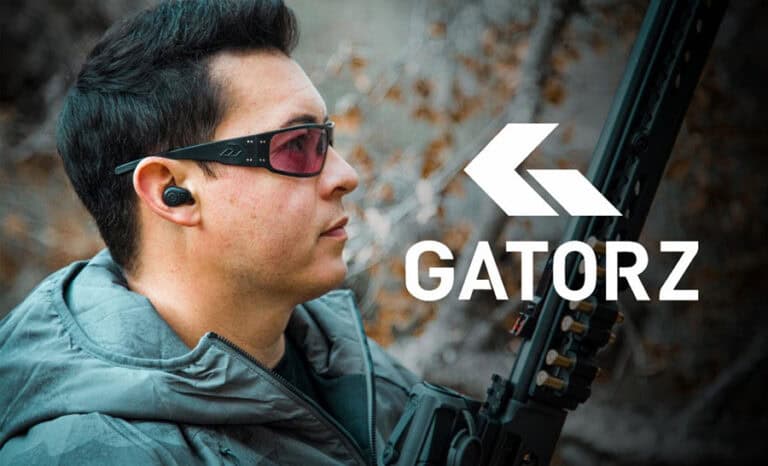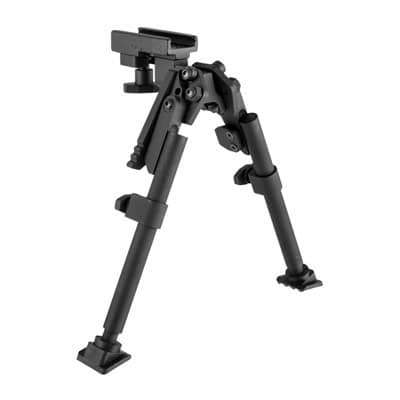SureFire SOCOM-4 Series—A New Fighting Suppressor
Fountain Valley, CA—SureFire, LLC, manufacturer of the world’s finest—and most innovative—illumination tools and…
Fountain Valley, CA—SureFire, LLC, manufacturer of the world’s finest—and most innovative—illumination tools and…
Shinenyx—creators of a cutting-edge fusion of digital night vision and thermal imaging technology—has…
German Precision Optics’ Passion APO is a high-performance compact spotting scope designed and…
The Mod-Navy Qual I’ve been doing this qual (or drill, or whatever the current nom…
• Built for road trips and off-road use• Manual transmission equipped• Wrapped in MultiCam Arctic…
I designed the Button Man to give shooters a low-round-count, low-light-engagement drill that involved both…
Our partners over at SpotterUp.com published an article on Basics Tactics: Modified Close Quarters Battle Entry. More Tactics, More Better.
Adversity has the effect of eliciting talents, which in prosperous circumstances would have lain dormant. Horace
We want to again restate this article is not a “be-all” “end-all” article that will solve every ‘tactical’ problem. It is written solely to introduce the concept of tactical movement to those with little experience or knowledge in this area. Theory and Reality are two different things; what works in the classroom will not always work in “life”. Spotter Up will assume “no” responsibility for any use or misuse of information from this article. This article alone will not make the reader an expert in tactics or in firearms nor can it be used as a substitute for PROFESSIONAL TACTICAL TRAINING or WEAPONS TRAINING. Spotter Up advises you to visit our site for training courses with a certified instructor On ALL weapon platforms.
Circumstances are an attribute, detail, or condition with respect to time, place, manner, agent, etc., that accompanies, determines, or modifies a fact or event; it is a modifying or influencing factor. Keeping this in mind, know then, there are no fail safe entries. Every entry by units has pros and cons and there are far too many elements to list here. Trying to list every element would only cause more confusion. Practicing a technique will elicit the reasons why.

How many men should stand in a stack, what kind of weapons does each man utilize (shotgun, pistol, rifle), where does each person stand in the stack, etc. Let’s keep it simple…Not all techniques are useful for every team. Take what works for your team.

The Modified room-entry technique is a combination of the crisscross and buttonhook entry techniques. It is used when an entry-point must be entered from the same side by the *operators. Reasons for attempting this kind of entry-point technique are numerous: If breaching is required, if an obstruction at one side of the portal doesn’t allow a team to stack at opposite, facing ends, and so on.

Upon stacking to one side of the entry-point, the first operator (1) enters the portal and takes postion within the room and faces opposite the position he originally faced. The second operator (2) crosses the entry-point, into the portal and stands within the room, away from the fatal funnel, without changing his facing direction. The operators can change the order of who enters first and what direction they go; first operator is never wrong, and second operator takes the opposite side.

*Operator: Officer/Troop member
(Image courtesy of Wikipedia FBI Portland, Oregon)
Guns & Tactics is an online media outlet that focuses on the firearms community, not just firearms and gear but also quality training, technical break downs and enlightening presentations.
NRA Life of Duty presented by Brownells has just released a new documentary entitled “Reclamation: The Battle for Terra Firma”. This Patriot Profile Feature sponsored by Smith &…

The new GATORZ High Contrast Shooting Lens is available in both daylight and low light options, providing optimal contrast.

Bipods – For long range shooting, competition, hunting or because you want something to keep your rifle up off the ground away from dirt, sand, water & mud.

We The People Holsters has just released some new products. Long sleeve shirts, beanies and more. Check it out.
[dcs_img_center desc=”Law Tactical Gen II Folding Stock Adapter | Photo by Jody Lewis, Crossfire Photography” framed=”no” w=”600″ h=”270″] http://gunsandtactics.wpengine.com/wp-content/uploads/2013/10/law-tactical-600-270-1.jpg [/dcs_img_center] [dcs_post_top] [dcs_fancy_header bgcolor=”#ffffff” color=”#000000″ fweight=”bold”]Guns & Tactics presents…
With yet another business having been dragged into a gun control debate that they wanted nothing at all to do with, it’s time for open carry activists to…
© 2025 UN12 Magazine
© 2025 UN12 Magazine
Wait! Don’t forget to